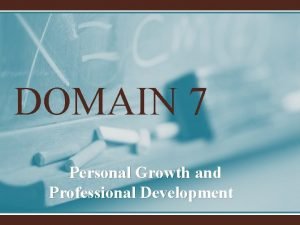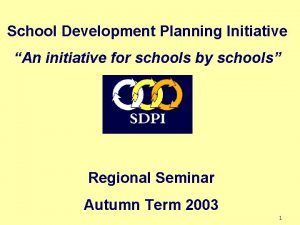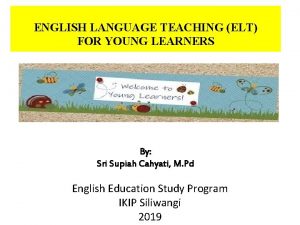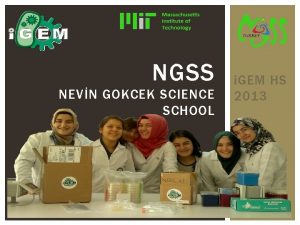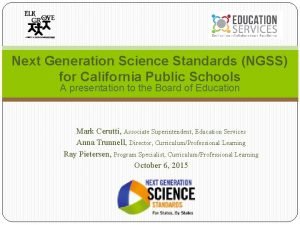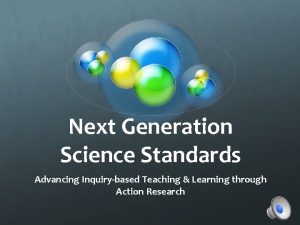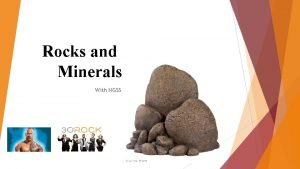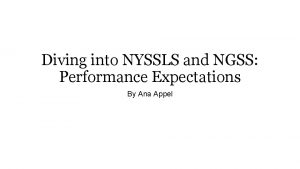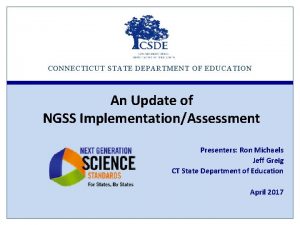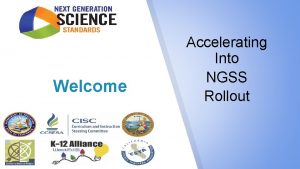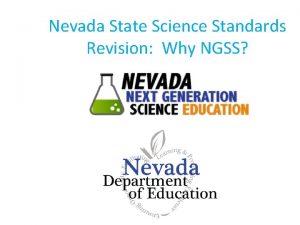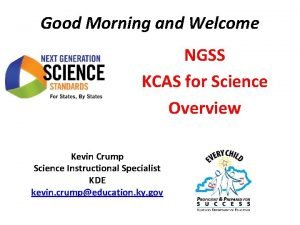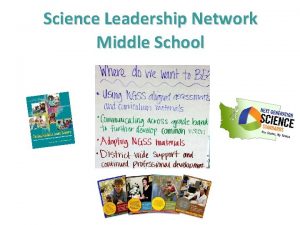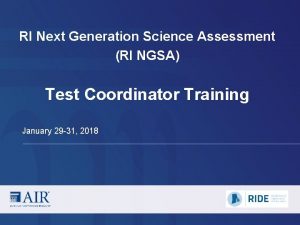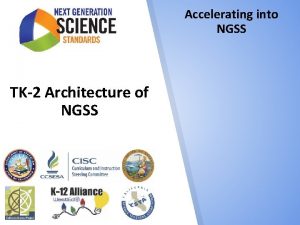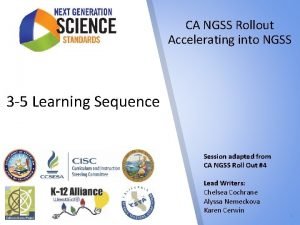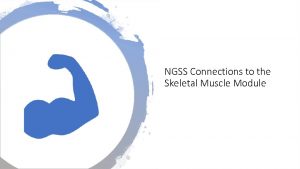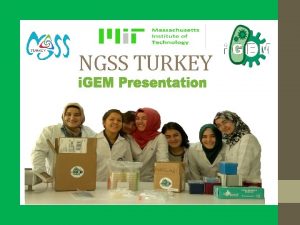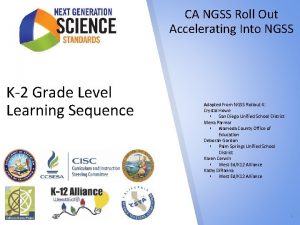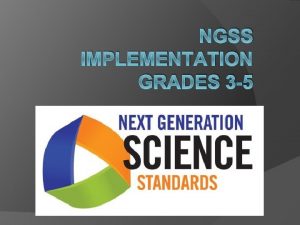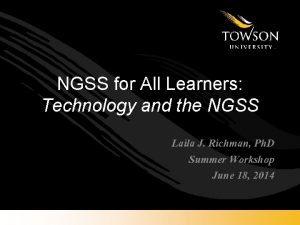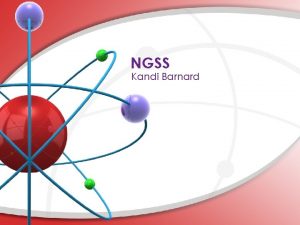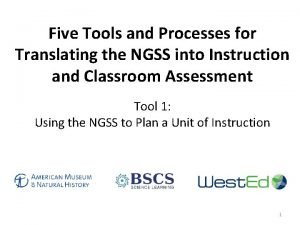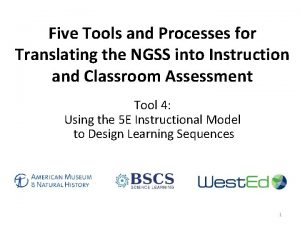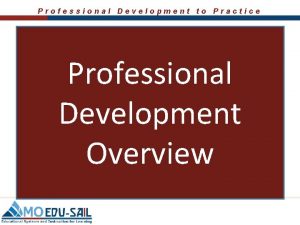TRANSLATING NGSS FOR CLASSROOM INSTRUCTION TEACHERS PROFESSIONAL DEVELOPMENT
















- Slides: 16

TRANSLATING NGSS FOR CLASSROOM INSTRUCTION: TEACHERS’ PROFESSIONAL DEVELOPMENT Rodger W. Bybee Executive Director (Retired) Biological Sciences Curriculum Study (BSCS) BUILDING CAPACITY FOR STATE SCIENCE EDUCATION Denver, Colorado 20 -21 June 2014

A STANDARD

ADDRESS TEACHERS’ CONCERNS The composite representation of the feelings, preoccupation, thought, and consideration given to a particular issue or task is called a concern. All in all, the mental activity composed of questioning, analyzing, and re-analyzing, considering alternative actions and reactions, and anticipating consequences is concern. Hall, G. and Hord, S. (2001). Implementing Change. Allyn and Bacon, pp. 61 -62.

STAGES OF CONCERN: Typical Expressions of Concern about the Innovation Hall, G. and Hord, S. (2001). Implementing Change, p. 61.

FROM NGSS TO CLASSROOM INSTRUCTION: TEACHERS’ CONCERNS • Assessments “Will Assessments Change? ” • Curriculum “Are There Curriculum Materials I Can Use? ” • Instruction “Are There Effective Instructional Strategies I Can Use? ” • Common Core State Standards “Are There Connections to the Common Core State Standards for English Language Arts and Mathematics? ” • Professional Education of Teachers “What Knowledge and Skills Do Teachers Need to Implement NGSS? ”

TRANSLATING STANDARDS FOR SCIENCE EDUCATION: SOME INSIGHTS • Nothing perfectly aligns with the NGSS except the NGSS • Accommodating the language of NGSS for the language of curriculum, instruction, and assessment • Recognizing different dimensions of education—purpose, policy, program, and practice • Understanding the limits and possibilities of translating standards and accepting the trade-offs • Designing professional development based on teachers’ concerns and innovations implied by NGSS

TRANSLATING STANDARDS FOR CLASSROOM INSTRUCTION: DIMENSIONS PURPOSE Purpose statements include the aims, goals, and rationales. These statements tend to be universal, abstract, and apply to all components of the science education system (e. g. , teacher education, curriculum, instruction, and assessment). Although it presents elements of both purpose and policy, A Framework for K-12 Science Education: Practices, Crosscutting Concepts, and Core Ideas (NRC 2012) has served as the purpose in this era of standards-based reform. POLICY Policies are more specific statements of standards, benchmarks, syllabi, and action plans based on the defined purposes. Policy statements are concrete translations of the purpose and apply to specific components such as teacher education, K-12 curriculum, and assessments. The Next Generation Science Standards is the policy statement most applicable to this discussion. PROGRAM Programs are the actual materials, books, and software used in states, schools, and classrooms. Programs are unique to disciplines, K-12 grades, and levels in the education system. Curriculum materials for K-12 science and state assessments are different examples of programs. Programs are a translation of policies to the unique requirements of programs. PRACTICE Practice refers to the specific actions of educators as they implement the program. Classroom teaching of science is an example of practices. Practice is the most unique and fundamental level of translation.

NGSS AND MAJOR INNOVATIONS FOR INSTRUCTIONAL MATERIALS • Integration of Three Dimensions (SEP, DCI, CCC) • Engineering Design and Nature of Science Incorporated as Practices or Crosscutting Concepts • Performance Expectations as Learning Outcomes • K-12 Learning Progressions • Connections to Common Core State Standards

INSTRUCTIONAL SHIFTS FROM TO • Science Facts and Concepts Science and Engineering Practices Crosscutting Concepts Disciplinary Core Ideas • Science Alone Science, Engineering, Nature of Science • Science Facts and Concepts as Basis for Assessment Performance on 3 Dimensional Basis for Assessments • Grade-Level Content Coherent Progression Across Grades of Concepts and Practices • Science Not a Basic Science and CCSS (English Language Arts and Mathematics)

MAKING SENSE OF NGSS INNOVATIONS THE 5 Cs NGSS IMPLICATIONS FOR SCIENCE EDUCATION Content Three Dimensions (SEP, DCI, CCC) Integrated Instructional Sequence Coupling Incorporation of Engineering Design and Nature of Science as Practices and Crosscutting Concepts Engineering and Nature of Science Integrated Across Curriculum Performance Expectations Assessment Curriculum Learning Progressions K-12 Science Program Connections Common Core State Standards Links the Basics and Science Competencies

NGSS TO CLASSROOM INSTRUCTION THERE IS A NEED FOR INSTRUCTIONAL MATERIALS DESIGNED TO ACCOMMODATE THE NGSS INNOVATIONS. -OPTIONS- • Develop New Instructional Materials • Adapt Current Materials

ADAPTING CURRENT INSTRUCTIONAL MATERIALS • Think Beyond a Lesson to an Integrated Instructional Sequence (e. g. , BSCS 5 E Instructional Model) • Identify a Coherent Set of Performance Expectations (e. g. , bundle PEs using a topic, theme, or context) • Clarify the Difference Between Learning Outcomes and Instructional Strategies (e. g. , SEPs are BOTH learning outcomes and use instructional strategies) • Consider How to Integrate Three Dimensions (e. g. , use a framework for lesson, activities) • Use Backward Design (e. g. , develop the assessment/evaluate first)

LEVELS OF USE OF THE INNOVATION VI RENEWAL V INTEGRATION IVB REFINEMENT IVA ROUTINE III MECHANICAL USE II PREPARATION I ORIENTATION 0 NONUSE Hall, G. and Hord, S. (1987). Change in Schools. State University of New York Press, p. 84

CONCLUSION THE SISYPHEAN QUESTION IN SCIENCE EDUCATION: WHAT SHOULD THE SCIENTIFICALLY AND TECHNOLOGICALLY LITERATE PERSON KNOW, VALUE, AND BE ABLE TO DO— AS A CITIZEN? (Bybee, 1985)

THANK YOU

 Domain 7, personal growth and professional development
Domain 7, personal growth and professional development Quote on professional development
Quote on professional development Professional development for teachers
Professional development for teachers Kim kroll
Kim kroll Classroom language for teachers
Classroom language for teachers Bio nedir
Bio nedir Ngss yazılım
Ngss yazılım Next generation science standards california
Next generation science standards california Ngss inquiry based learning
Ngss inquiry based learning Rock cycle ngss
Rock cycle ngss Nyssls
Nyssls Ngss practice test ct
Ngss practice test ct Welcome to ngss
Welcome to ngss Why ngss
Why ngss Welcome to ngss
Welcome to ngss Ngss lesson screener
Ngss lesson screener Ngsa science test
Ngsa science test
